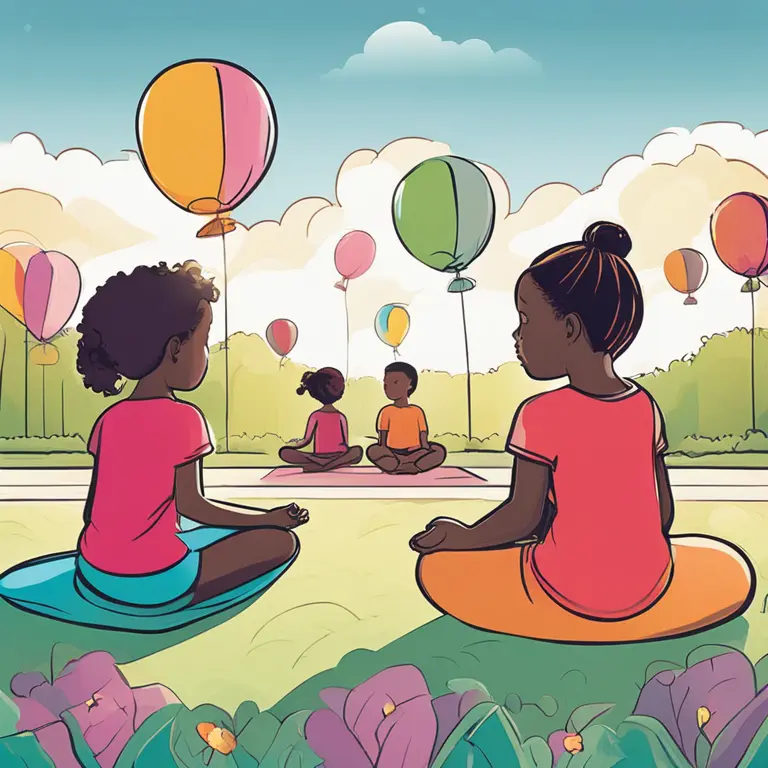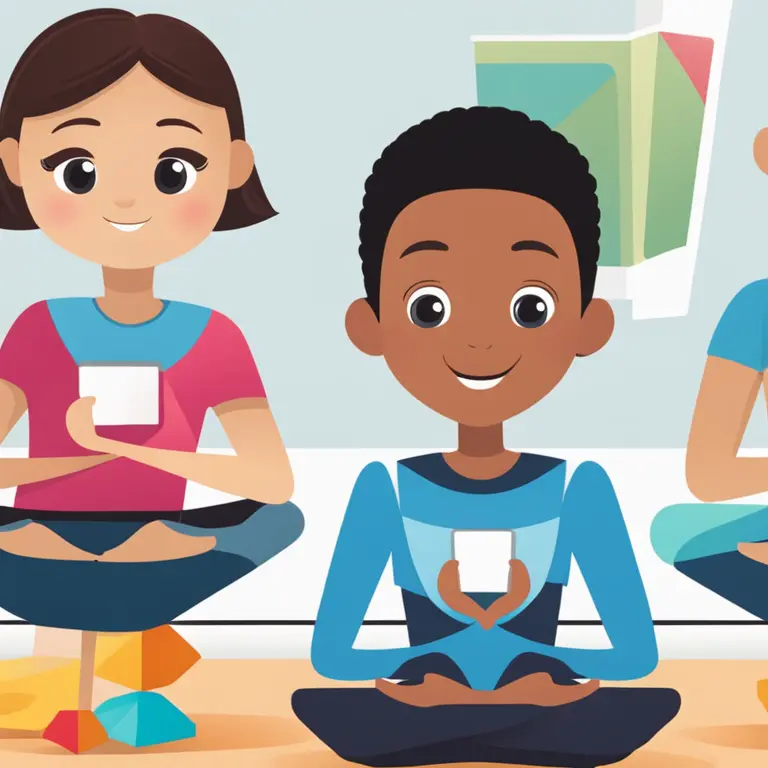
Simple Meditation Practices for Children
Discover how meditation can benefit children by fostering calmness, focus, and emotional balance through easy and fun techniques.
article by Hina Kurosawa
The Importance of Meditation for Kids
In a world where screens often dominate the landscape of childhood, introducing youngsters to meditation can be an antidote to stress and overstimulation. As we continue to recognize the significance of mental health alongside physical health, the practice of meditation for kids has gained momentum. Through meditation, children can learn to manage emotions, develop concentration, and experience calmness. Additionally, these early lessons in mindfulness can establish a foundation for balanced emotional well-being as they grow into adolescence and adulthood.

Starting Simple: Breath Awareness
When introducing meditation to children, simplicity is key. Begin with the basic but powerful practice of breath awareness. Encourage kids to find a comfortable seated position and to close their eyes gently. Guide them to notice their breath—how the air feels entering and exiting the nose—and to count breaths slowly. Instruct them to place a hand on their abdomen and feel it rise and fall. This exercise, often called "balloon breathing," is engaging and accessible, forming a solid starting point for a lifelong meditation practice.

Creative Visualization for Engagement
Children have vivid imaginations, which can be harnessed through creative visualization techniques. Invite them to envision a peaceful place, perhaps a beach or a forest. Encourage them to engage all their senses by asking what they see, hear, and feel in this place. Not only does this practice help in calming their minds, but it also strengthens their creative muscle. By using visualization, meditation becomes an enjoyable activity, rather than a chore, making them more likely to stick with it.

Incorporating Movement with Mindfulness
Meditation doesn't always have to mean sitting still. Movement can be a form of active meditation, particularly appealing for energetic children. Yoga poses, for example, can blend physical activity with mindfulness. Simple postures coupled with focused breathing can help children remain present while releasing excess energy. Guided activities like slow walks in nature or gentle stretching can also double as meditative experiences, promoting a sense of tranquility amidst activity.

Mindful Listening and Sound-Based Meditation
Another engaging method is sound-based meditation. Use of calming sounds or music can foster a relaxing environment for children to meditate. Instruments like Tibetan singing bowls or soft chimes are especially effective, as their resonant tones can help focus young minds. Alternatively, guiding children through a process of mindful listening—to the sounds of nature or their immediate environment—can deepen their awareness and ground them in the present moment.
Guided Meditation: A Tool for Focus and Relaxation
For a structured approach to meditation with children, consider guided meditation sessions. These can take the form of narrated stories or journeys that command attention while indirectly teaching mindfulness. Apps and online resources tailored to children's meditation offer an array of options, often featuring animation or engaging storylines that capture their interest. Regular use of these tools for short periods can significantly enhance a child's ability to focus and relax when needed.
Consistency and Patience in Practice
Like any new skill, meditation requires consistency and patience, especially for children. It's vital to set a regular time and create a comfortable, distraction-free space for practice. Start with just a few minutes daily and gradually increase as the child becomes more accustomed to the activity. Encouragement and praise for their efforts will build confidence and reinforce the habit. Remember, the goal is to make meditation a natural and enjoyable part of their routine, shaping resilient and mindful individuals.
Published: 1/14/2024
Modified: 1/15/2024
More predictions
Come back here soon to learn more about yourself and your future


Mindfulness & Meditation: A Guide for High Schoolers
Discover the benefits of mindfulness meditation tailored for the hectic life of high school students, and learn simple strategies to incorporate it into the daily routine.


Harmonizing Life with Meditation Mantras
Delve into the transformative power of meditation mantras to align mind, body, and spirit for a harmonious existence.


Mindfulness Meditation Basics for First Graders
Introducing foundational mindfulness meditation practices to instill calm and focus in first-grade students.